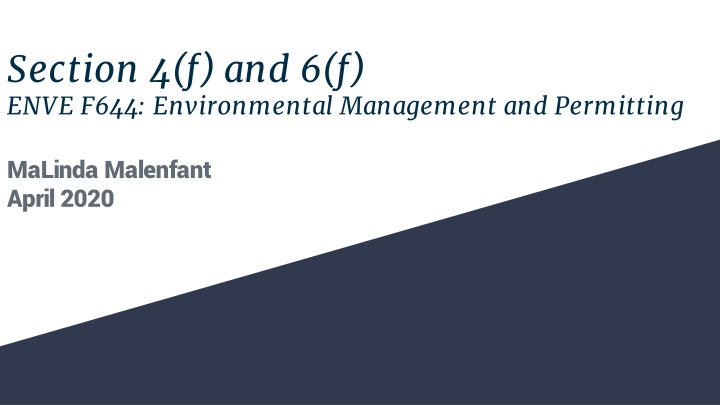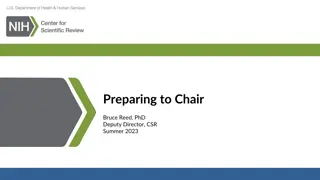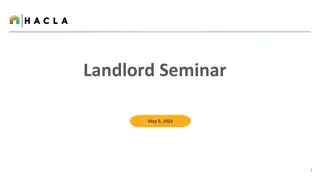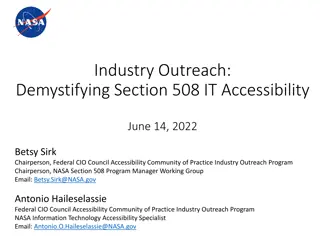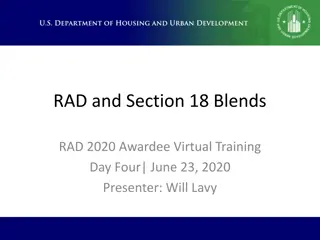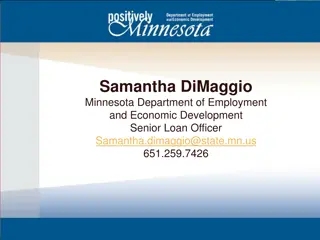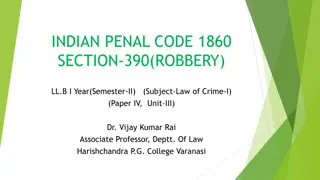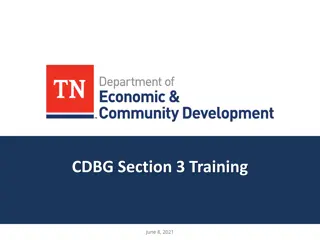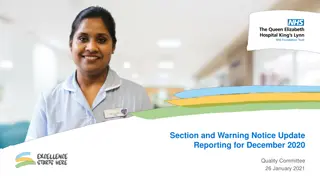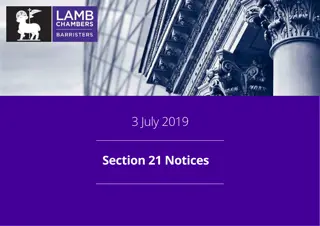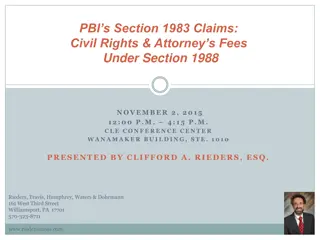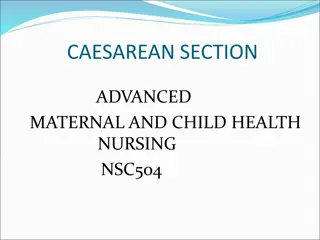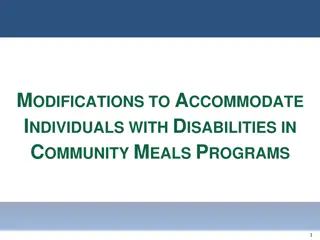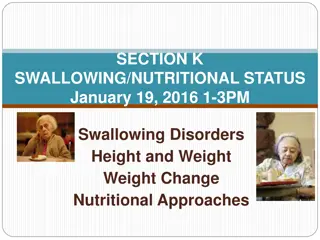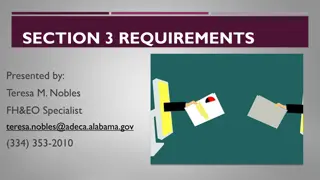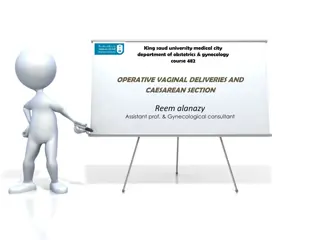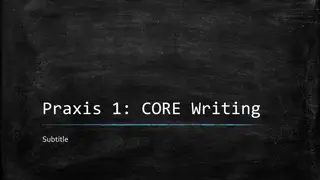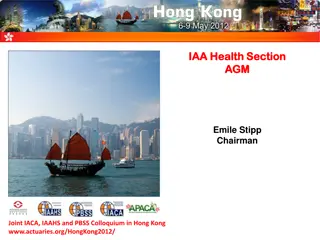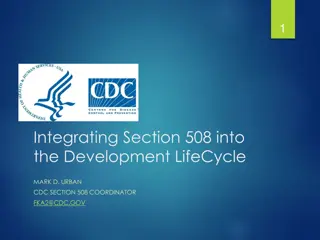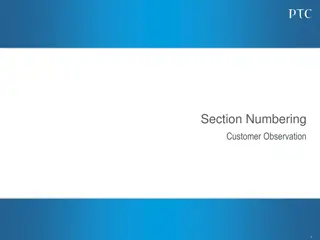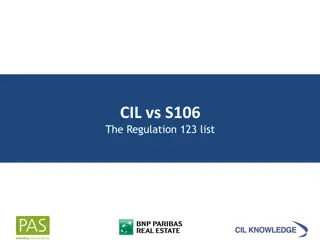Section 4(f) and 6(f)
Regulations of Section 4(f) and 6(f) of the U.S. DOT Act regarding the use of public land for federal highway projects, exceptions, authority to regulate, and when these sections apply.
Download Presentation

Please find below an Image/Link to download the presentation.
The content on the website is provided AS IS for your information and personal use only. It may not be sold, licensed, or shared on other websites without obtaining consent from the author.If you encounter any issues during the download, it is possible that the publisher has removed the file from their server.
You are allowed to download the files provided on this website for personal or commercial use, subject to the condition that they are used lawfully. All files are the property of their respective owners.
The content on the website is provided AS IS for your information and personal use only. It may not be sold, licensed, or shared on other websites without obtaining consent from the author.
E N D
Presentation Transcript
Section 4(f) and 6(f) ENVE F644: Environmental Management and Permitting MaLinda Malenfant April 2020
Section 4(f) of U.S. DOT Act Introduction: Regulation: 23 CFR Part 774 Parks, Recreational Areas, Wildlife and Waterfowl Refuges, and Historical Sites Codified at 23 U.S.C. 138 and 49 U.S.C. 303 The Federal Highway Administration and other Department of Transportation entities cannot approve the use of publically used land for federal highway projects, such as: Publicly owned parks Recreational areas Wildlife and waterfowl refuges Public or private historical sites
Exceptions to Section 4(f) of U.S. DOT Act There is found to be no feasible and prudent avoidance alternative to the use of land and includes planning to minimize harm to the property OR It is determined that the use of the property will have a de minimis impact de minimis: about minimal things When pertaining to this law: too minor to merit consideration
Authority to regulate: The Secretary of the US DOT is the ultimate decision maker for Section 4(f) --They are encouraged to consult Secretaries of the Interior, Housing and Urban Development, and Agriculture Examples: Historical Sites: State Historical Preservation Officer (SHPO) Tribal lands: Tribal Historical Preservation Officer (THPO) National historical landmark: official from National Park Service
Exceptions when required to consult Officials have been consulted and have not objected for Applying exception for restoration/rehabilitation/or maintenance of historical transportation facilities 23 CFR 774.13 (a) Applying exception for archeological sites of minimal value for preservation in place 23 CFR 774.13 (b) Officials have given written concurrence for No adverse effects prior to de minimis findings 23 CFR 774.5 (b) Applying exceptions for temporary occupancies 23 CFR 774.13 (d) Applying exceptions for transportation enhancement activities and mitigation activities 23 CFR 774.13 (g)
When does Section 4(f) apply? When US DOT approves a transportation program or project that uses property outlined in Section 4(f) * currently FHWA doesn t approve transportation programs, so only projects apply * In addition, the following four conditions must be met: 1. Project must require approval from FHWA to proceed 2. Must be considered a transportation project 3. Must require use of the land from a protected property by Section 4(f) 4. None of the regulatory applicability rules or exceptions apply
Where doesnt Section 4(f) apply? Additional info about where Section 4(f) isn t applicable can be found in Part II of the Section 4(f) Policy Paper https://www.environment.fhwa.dot.gov/legi slation/section4f/4fpolicy.aspx#intro In these situations, the FHWA requires sufficient documentation to demonstrate why the determination is made that Section 4(f) is not applicable
Independent Bikeway or Walkway Construction Projects (approved May 23, 1977) Use of Historic Bridges (approved July 5, 1983) Minor Involvement with Public Parks, Recreation Lands, and Wildlife and Waterfowl Refuges (approved December 23, 1986) Minor Involvement with Historic Sites (approved December 23, 1986) Transportation Projects that have a Net Benefit to Section 4(f) Property (approved April 20, 2005) Programmatic Evaluations: Five National Programmatic Evaluations that can be used in place of Individual Evaluations if the situation applies. These do not require draft, comment, or circulation periods because they have already been approved by DOI.
Individual Evaluations: Requires two drafts: draft and final These need to be submitted to the FHWA Division Office or the Federal Lands Division Office. Final evaluations need to be sent to the FHWA s Office of Chief Counsel for legal sufficiency review. The project sponsor should submit drafts that 1. Identify and evaluate avoidance alternatives 2. Identify and evaluate ways to decrease harm to the section 4(f) property
Individual Evaluations Cont. In these cases: EIS/EA: the evaluation should be submitted as a NEPA subsection CE and in projects where plan changes have been made after processing CE or FONSI : the evaluation should be a separate document
Section 6(f) Introduction: Of the Land and Water Conservation Fund Act LWCFA of 1965 was enacted to establish a funding source for State and Federal agencies to meet present and future recreational demands. Funds can be used for: Planning Acquisition Development Section 6(f) specifies that all lands utilizing funds from the LWCFA need to be maintained as such, and cannot be converted into anything other than a recreational area without approvals
Who can approve? LWCF Act is administered by the Department of the Interior (DOI) and the National Park Service (NPS) Lands which utilize LWCF Act cannot be converted unless approved by the Secretary of DOI through the NPS at the State s request.
Use of LWCF Act Lands: Section 6(f) directs DOI to ensure replacement lands for LWCFA lands that are used for projects. Replacement lands need to be equal in: Fair market value Location Usefullness *Also need to meet eligibility requirements as outlined in 36 CFR 59.3(b)(4)(i-iv)*
Section 4(f) and 6(f) overlap Section 6(f) lands, because they are used for recreation, often overlap with Section 4(f) of the U.S. DOT Act. When identifying lands encompassed by Section 4(f) for projects, it may be also necessary to determine if any of the lands proposed also fall under Section 6(f) of the LWCFA. If they do, mitigation effects should take into consideration not only the Section 4(f) requirements, but also Section 6(f) requirements.
Thank you Questions?
Photos used: https://www.travelalaska.com/Destinations/Parks-and-Public-Lands/Creamers-Field-Migratory-Waterfowl- Refuge.aspx https://www.lonelyplanet.com/usa/alaska/denali-national-park https://alaskaphotographics.photoshelter.com/img-show/I0000l24IEItjQ0s https://www.fhwa.dot.gov/byways/photos/77722 https://www.shutterstock.com/search/car+road+panorama https://mapio.net/pic/p-27659723/
Works cited Section 4(f). FHWA, www.environment.fhwa.dot.gov/legislation/section4f.aspx. SECTION 4(f) POLICY PAPER. FHWA, www.environment.fhwa.dot.gov/legislation/section4f/4fpolicy.aspx#doc. Section 4(f). Environmental Review Toolkit, www.environment.fhwa.dot.gov/legislation/section4f/4f_minor_parks.aspx. Fhwa. Evaluations. Section 4(f) Evaluations, www.environment.fhwa.dot.gov/env_topics/4f_tutorial/evaluations_individ.aspx. Section 4(f)/Section 6(f). Center for Environmental Excellence by AASHTO, environment.transportation.org/environmental_topics/section_4f/overview.aspx.
